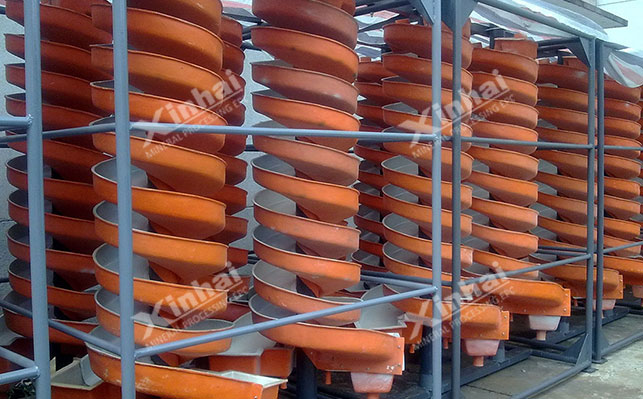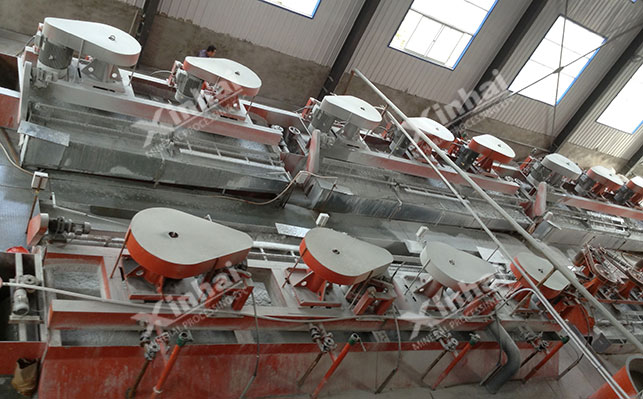As antimony ores are continuously mined, the availability of rich ores is decreasing while poor ores are increasing. Therefore, improving the grade of antimony ore has become an important issue. Common methods for antimony ore beneficiation include heavy media separation, heavy magnetic separation, flotation, cyanide leaching, etc. Among them, gravity separation and flotation are commonly used methods for antimony ore processing. This article introduces how to improve the flotation grade of antimony ore.
Gravity separation is mainly used for the separation of antimony oxide ores, offering advantages of easy operation and lower cost. Antimony oxide ores account for a significant proportion in China's antimony ore resources, constituting approximately 50% of the total in antimony ore production. To enhance the production efficiency of beneficiation plants and reduce energy consumption, gravity separation methods are often employed.

Gravity separation process for antimony ore:
Pre-treatment of antimony oxide ore involves crushing and grinding the ore, with the grinding output granularity set at 200 mesh.
The post-grinding material is screened using a vibrating screen. Coarse-grained materials above 200 mesh are sent back for re-grinding, while materials below 200 mesh enter a hydraulic classifier for classification.
The hydraulic classifier removes fines with a fineness of 800 mesh, eliminating undesired sludge.
Using gravity separation equipment such as shaking tables, spiral chutes, and jig machines, the classified material undergoes gravity separation to obtain rough concentrates.
Concentration and drying processes are applied to the rough concentrates, producing qualified antimony concentrate products with a concentrate grade of up to 15%.

The beneficiation method for antimony sulfide ores typically involves flotation. The beneficiation process is outlined as follows:
Antimony ore is crushed and ground to achieve a certain fineness for subsequent flotation and gravity separation operations.
The ground antimony ore is placed in a flotation cell. pH regulators (sulfuric acid) are added to adjust the pH of the ore pulp to 6. Activators (lead nitrate, dosage: 200–600 g/ton), collectors (butyl xanthate, dosage: 60–80 g/ton; butyl ammonium powder, dosage: 30–40 g/ton), and frother (MIBC, dosage: 30–40 g/ton) are sequentially added to the ore pulp. After thorough mixing in the agitation tank, the mixture is transferred to the flotation machine for flotation operations, resulting in antimony concentrate.
The antimony froth flotation product undergoes further gravity and fine-grained selection processes to remove impurities and improve the grade and recovery of antimony.
With continuous technological development, new antimony ore beneficiation methods are emerging, such as oxidative roasting leaching, oxidative-reductive leaching, oxidative roasting flotation, etc. These new methods not only improve the grade and recovery of antimony but also reduce environmental pollution, showing broad application prospects.
Antimony alloy, a product of antimony ore, possesses characteristics such as wear resistance and corrosion resistance, playing a crucial role in the production of bearings, gears, vehicle and vessel frameworks, and pipeline pumps and valves. Therefore, the continuous improvement of antimony ore flotation grade and the production of high-quality antimony alloys are ongoing challenges for the future.